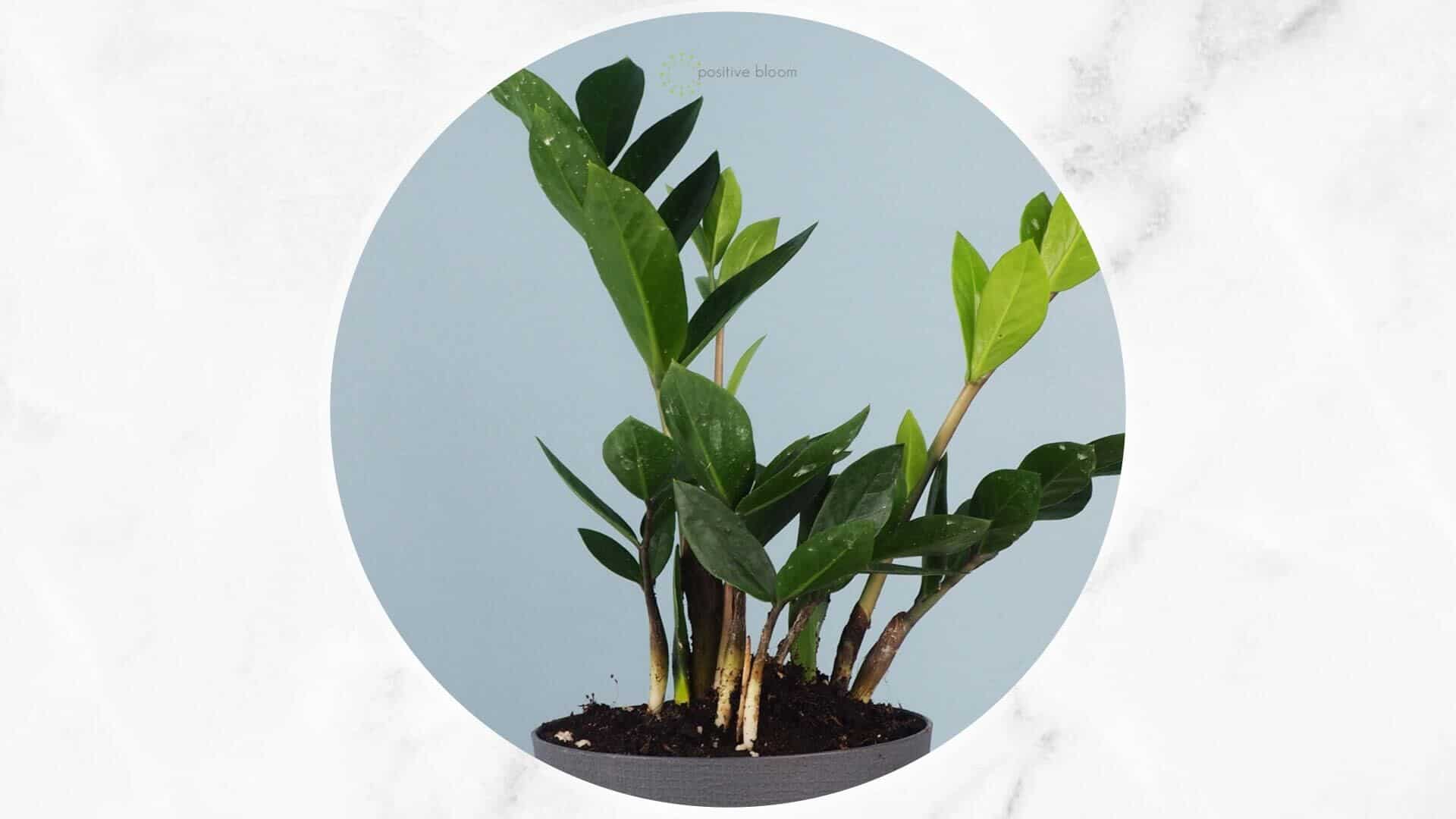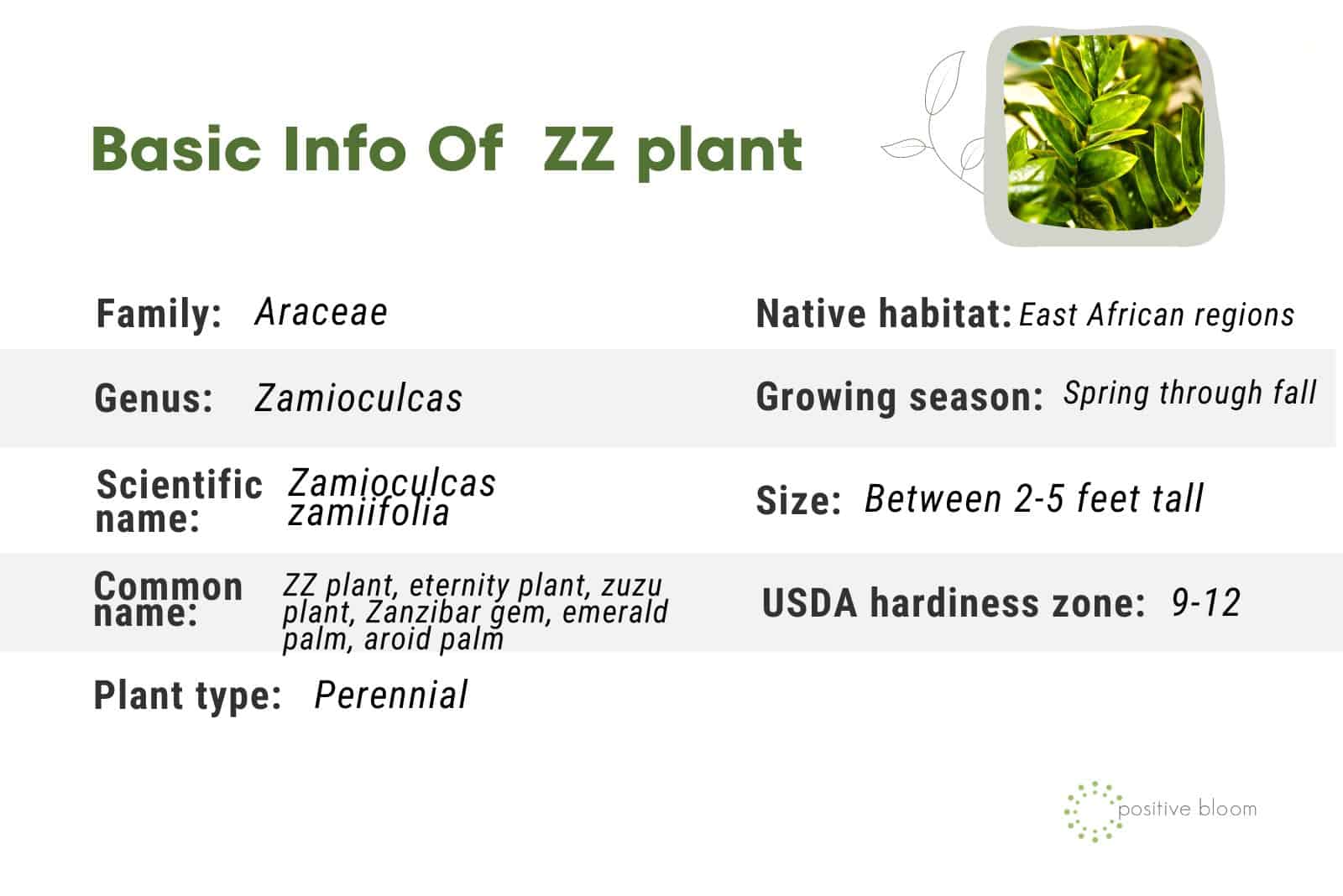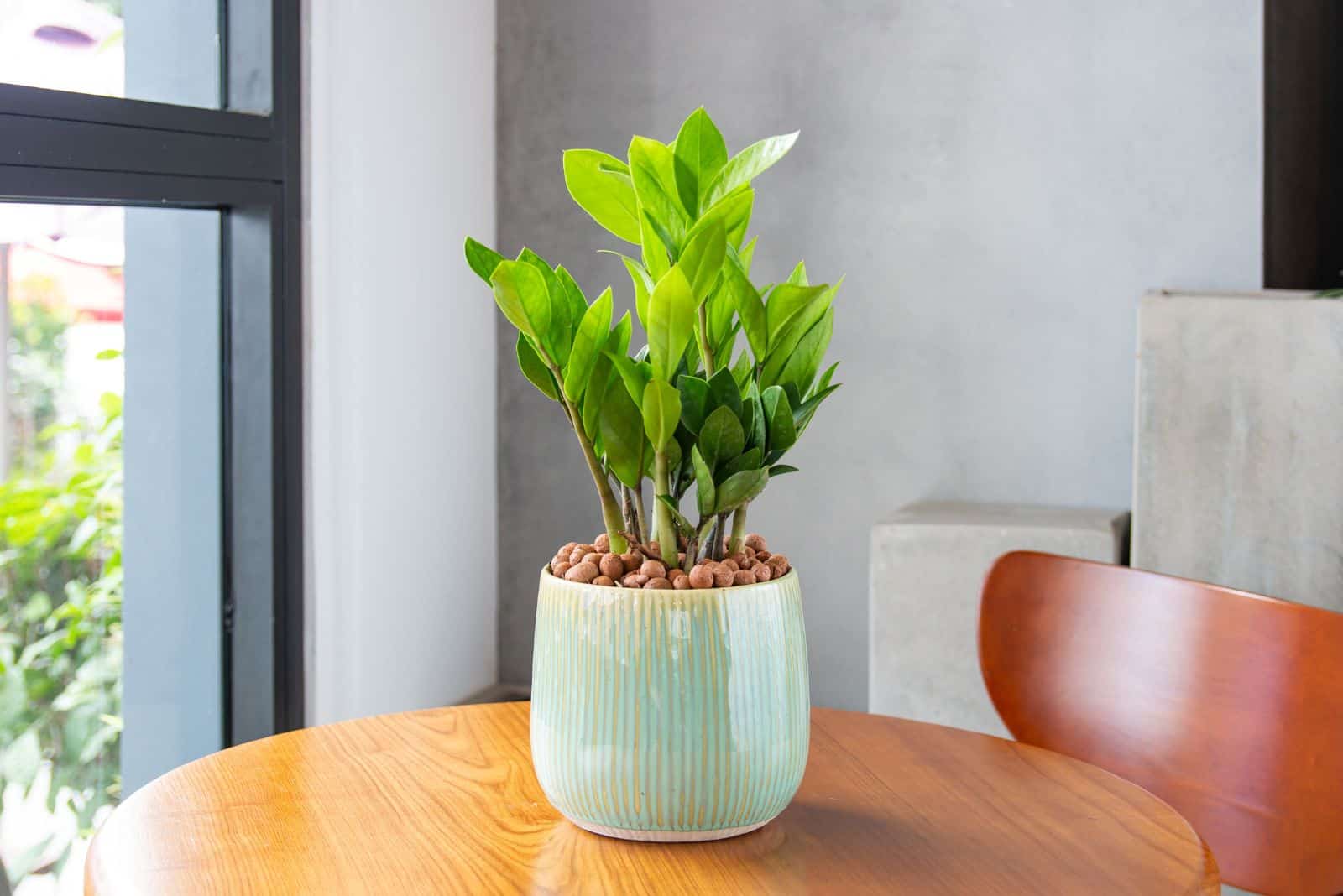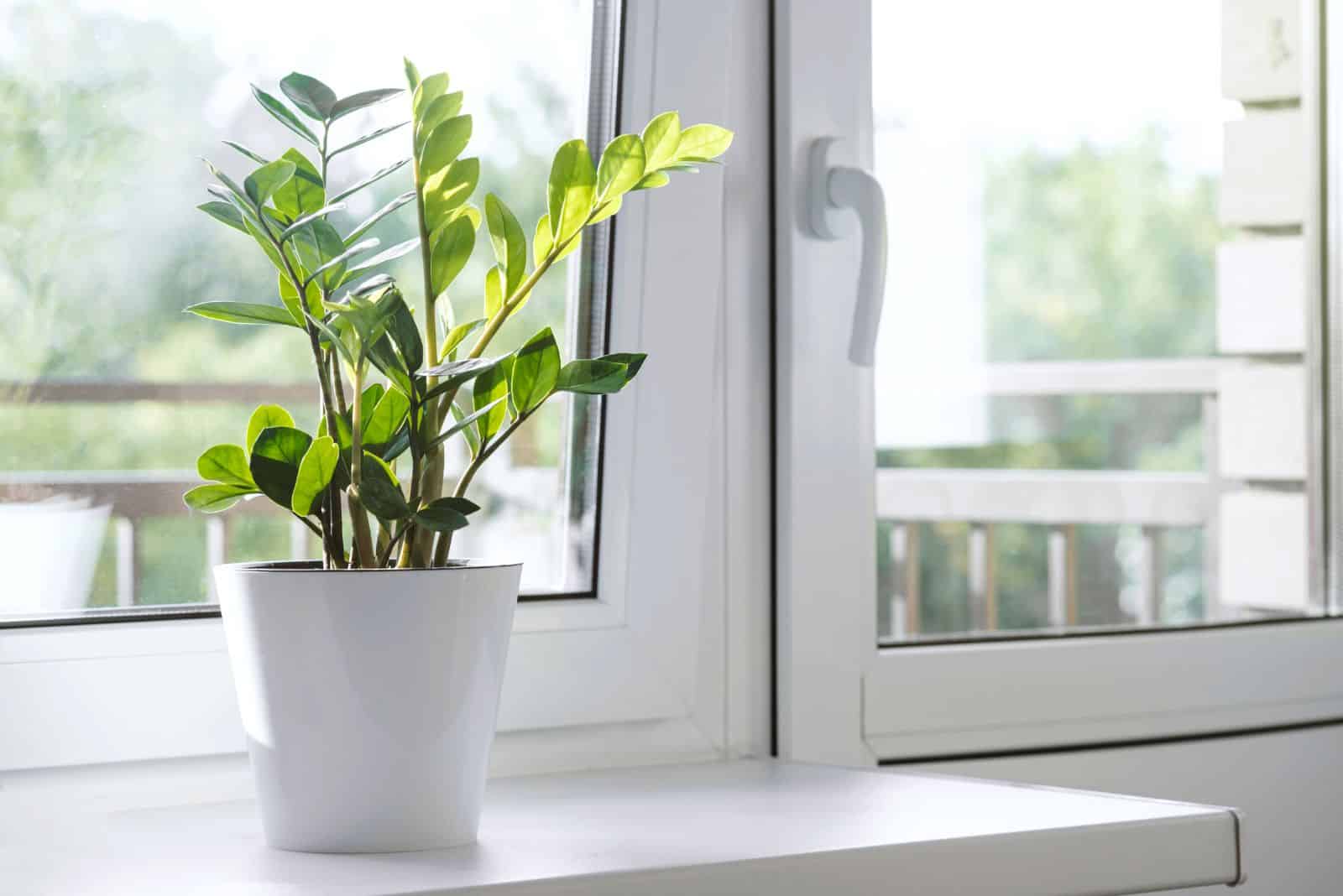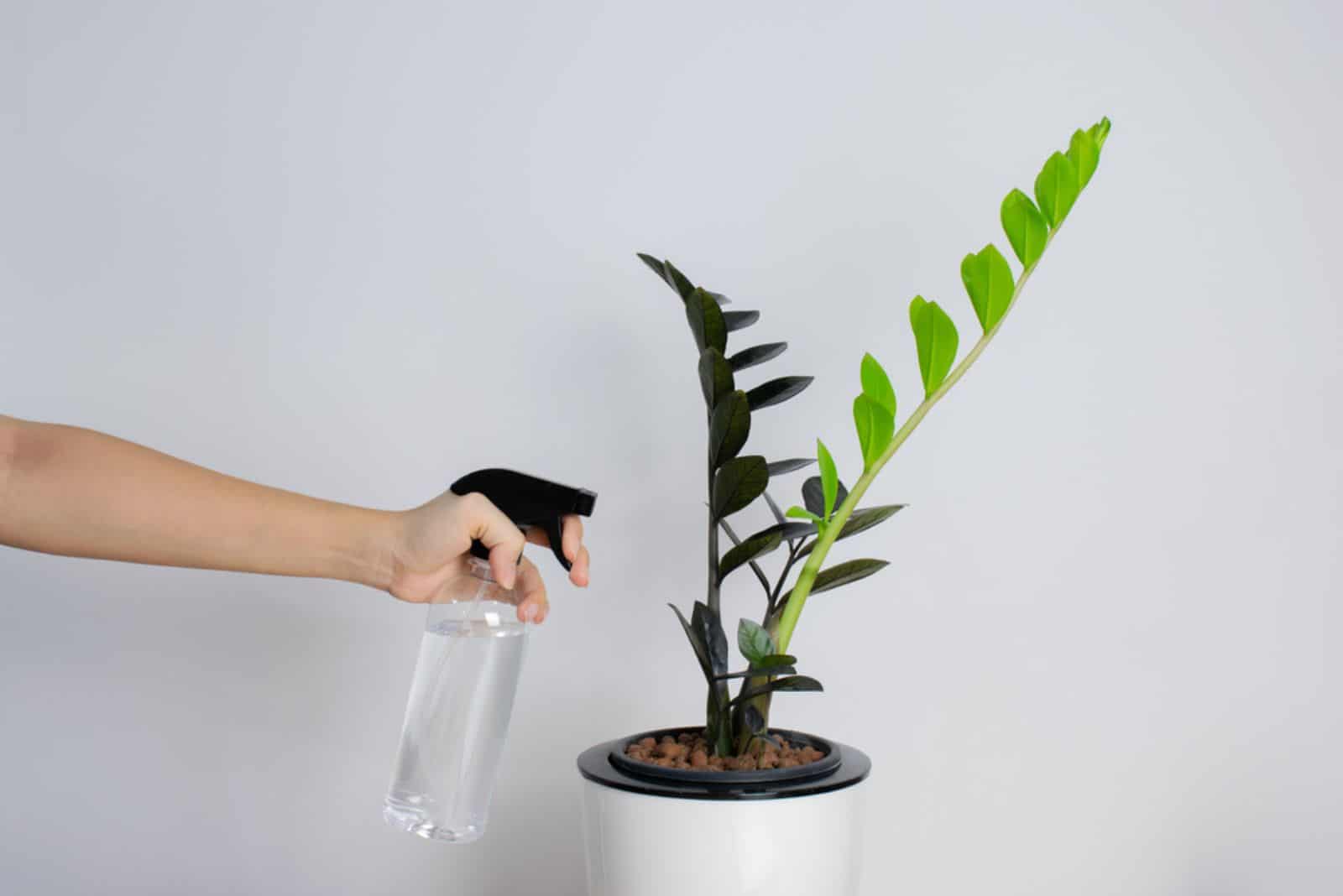If you look at plant collections from across the world, it’s highly likely you’ll notice one plant they all have in common – the ZZ plant.
This green buddy has been a popular houseplant for many years, and we still have much to learn about it.
For instance, when I first got mine, I noticed my ZZ plant not growing and immediately thought that something was wrong with it. After many sleepless nights and extensive research, I realized that this was normal!
Therefore, you shouldn’t be alarmed if your plant doesn’t show much growth. Sometimes this symptom can indicate something devious going on, which is why you have to look at your plant holistically.
In the following article, we’ll examine all these issues and talk about what does and doesn’t help you speed up the ZZ plant growth rate.
Before we get there, here is some basic info about it:
ZZ Plants Are Slow Growers, But Why?
There are many ZZ plant varieties in the world, and you’ll notice that all of them grow slowly, at least indoors.
That’s because we usually don’t replicate their growing conditions perfectly, so they cannot fulfill their full potential.
For instance, ZZ plants are native to subtropical regions that get constant rain, but they still don’t rot. How is that possible? Well, the soil in those regions is rather porous, which keeps these plants from being waterlogged.
And if there’s a prolonged period of drought, the plant enters a state of dormancy, “reduces” its vegetative growth, and stays in that state until it gets more water. (1)
Another reason that your ZZ plant isn’t growing is the fact that it loves to be root bound. A plant in such a state doesn’t absorb a lot of nutrients and moisture, so it is only natural that it won’t exhibit much growth.
Furthermore, this species doesn’t like to be moved, so repotting it can cause a bit of stress and make it grow more slowly.
Another thing about repotting the Zanzibar gem is that it first fills out the pot with its roots, and only then focuses on producing vegetative growth to balance it out, so it might be a while before you notice any sign of real growth.
It Could Be The Season
One thing that can slow down your ZZ plant’s growth rate is the time of the year. As we approach winter and the days become shorter and shorter, your green buddy will get less and less sunlight whether you keep it indoors or outdoors.
The temperatures are also cooler than usual, which is another sign to your plant that it needs to prepare for imminent changes.
As the temperatures aren’t high and the sunlight is scarce, the plant doesn’t require plenty of moisture since the evaporation and transpiration rates are slower.
Therefore, lower soil temperature directly influences the evaporation rate, or rather it decreases it. (2)
This is important because these conditions lower the need for frequent irrigation, and when we combine all three of these factors, we’ll end up with a ZZ plant in dormancy.
It won’t grow during this period and will wait for more favorable conditions to put on new growth.
It May Be A Sign Of Infection
However, slow growth doesn’t always have to be natural. Sometimes it indicates that something is seriously wrong with your zuzu plant.
For instance, slow growth can be a sign of Pythium root rot or some other pathogen that causes this disease. (3)
As the disease progresses, you’ll notice droopines, yellow foliage, or even black spots on your ZZ plant.
Therefore, it is crucial to exhaust all the options if you notice that your green buddy isn’t growing. I didn’t take this seriously at first, and thought that my eternity plant was just rootbound as it had been a while since the last repotting.
However, I soon noticed yellow foliage and knew that something was wrong, so I checked its roots and found a lot of rot.
Luckily, I was able to save my plant, but the recovery journey was long and painful.
Helping My Zuzu Plant Grow Faster
If you know that your ZZ plant is healthy and just want to make it grow faster, you can find the answer to the “How” in this Zanzibar gem plant care guide.
The key things include it getting enough light, water, and nutrients, having the right temperature, growing medium, and humidity, as well as enough space for its roots to grow (sometimes).
We’ll discuss these conditions in the following sections, so be sure to stick around.
Give It A Proper Amount Of Sunlight
If your ZZ plant doesn’t get enough light, it won’t photosynthesize properly, which means the amount of sunlight is intricately connected to a rise or decrease in photosynthesis. (4)
A lack of photosynthesis implies that your green buddy isn’t producing enough food and energy to sustain itself.
As a result, it cannot put on new growth and has to save energy for rainy days, so to speak.
Therefore, you should keep it in indirect light where it can thrive, but away from the direct sun since it can burn its succulent-like foliage and interrupt photosynthesis even more.
The best locations for this plant include east- and south-facing window sills where the direct sunlight isn’t that harsh. (Although, I still don’t keep it immediately in front of the window as the indirect light is just enough.)
Think Of The Humidity
Even though this plant isn’t fussy about humidity levels, it could still benefit from a bit of additional air moisture.
The aroid palm, therefore, thrives when the humidity is 50% and above. And if you provide these levels, you’ll quickly notice an increase in its growth rate.
You can raise the indoor air moisture level by turning on a humidifier, which is a sure way to do it. Misting can also help, although it may cause too much moisture on the leaves, so proceed with caution when it comes to this method.
Water It When Necessary
If you notice that your ZZ plant is drooping, one of the first causes is either over or underwatering. These issues can also lead to stunted and slow growth, which is why you should be careful when irrigating your indoor buddy.
The best way to tell whether your plant needs more moisture is by observing its appearance and checking the growing medium. If the plant droops, has wrinkly foliage, and the top part of the potting mix is dry, you can go ahead and water it.
The good news about this plant is that it stores water in its foliage and tubers, so you don’t have to water it more than 2-3 times per week.
But if you want your ZZ plant to grow faster, place it in a fast-draining medium and water it more frequently for the best results (always waiting until the soil somewhat dries).
Don’t Forget About Warm Temperatures
Optimum growth of this plant takes place in temperatures between 65 and 90 degrees Fahrenheit. (5)
Therefore, if you expose your emerald gem to these conditions, it will thrive.
Of course, it will grow in temperatures between 60 and 100 degrees Fahrenheit, but that growth will be slowed down a bit.
Furthermore, make sure to keep it warm during winter and not expose it to conditions lower than 50 degrees Fahrenheit since that can lead to your plant not growing and even injury.
Adequate Soil Is Immensely Important
Growing a Zanzibar gem in an adequate soil will increase its growth rate and make it send out more shoots on a monthly basis.
Therefore, choosing the best potting soil for your ZZ plant is important if you want it to develop quickly and reach its mature height sooner.
The mix needs to be airy, loose, and well-draining so that it doesn’t retain too much moisture and lead to root rot.
The recipe that I use is simply mixing six parts pine bark with one part pumice, although you can add some more materials if you want to make it more moisture retentive.
And if you want to go the extra mile, you can check out some more tips for making the best soil for aroids in the following video:
Fertilize Your Plant From Time To Time
All plants need nutrients in order to grow properly, and the same goes for your emerald palm.
You can feed it with well-balanced houseplant fertilizers, but make sure to dilute them properly so that they don’t burn your plant’s root system.
Fertilize the ZZ plant twice a year in spring and summer, and refrain from winter fertilization since it can do more harm than good.
Pro tip: If you’ve just repotted your Zanzibar gem, there’s no need to fertilize it if you’ve added earthworm castings to the soil mix or used a store-bought medium enriched with plant food.
Last, But Not Least, Repot It!
As you know, one of the reasons that your ZZ plant isn’t growing is pot bound roots. However, this plant likes it that way, which is why you shouldn’t move it too often.
But if it’s been a while and you’ve noticed that there hasn’t been much growth (or none at all) in the recent months, you can move it to a larger container (but no larger than 2 inches in diameter).
The first thing I like to do when repotting plants is to prepare their new home. In the case of the ZZ plant, I like to use a terracotta pot with drainage holes as it is more porous and doesn’t collect condensation on its walls.
I then use some cut up panty hose to cover up the hole so that the mix doesn’t fall out and the roots don’t protrude from it (you can also use a nylon window screen if you don’t have this).
* To reduce the need for repotting, don’t cover the drainage hole. As the roots grow through it, you can just snip them and postpone this chore for a while.
Afterwards, I place some growing medium in the bottom of the planter so that I can cover the plant’s roots without burying its rachis (we refer to this growth as stems, but they are actually compound leaves).
Then I take the plant out of its old container, divide its roots a bit so that they can spread into the new pot, cover it with more growing medium, and water it.
Pro tip: To reduce the need for frequent repotting, use terracotta pots since the ZZ plant roots can disfigure the plastic ones.
Here are some more excellent ZZ plant repotting tips, especially if you want to combine two plants in one pot:
One Thing That Doesn’t Help A ZZ Plant Grow: Pruning
ZZ plants have a naturally slow growth rate, and pruning their rachises (compound leaves) won’t speed up the pace.
In fact, the only thing that will happen is your Zanzibar gem looking worse.
However, if you notice any discolorations on the leaves (black spots, browning, or yellowing) or a sign of disease, you should remove the stems.
In this case, removing foliage will result in increased foliage growth, just like in many other plants. (6)
The plant won’t waste its energy on trying to recover the dying foliage and will be able to direct it towards the production of new growth.
Final Thoughts
If you notice your ZZ plant not growing, it’s most likely either due to its physiology, since this is a slow-growing plant, or because it has just entered dormancy.
However, sometimes it can be a sign of root rot, so you should check your plant’s roots if you have any reason to suspect this infection.
And if all’s well with your ZZ, you can try and speed up its growth by providing it the best conditions in terms of lighting, watering, humidity, temperature, soil, and fertilizer.
And, of course, don’t forget to repot it every couple of years since rootbound plants grow much slower (even though this one does prefer being in such a state).
Until next time!
[sp_easyaccordion id=”19231″]

